Natural Wonders
Musical Horse
Submitted by my old high-school pal Sherry Mowbray.
Posted By: Paul - Wed Feb 13, 2013 -
Comments (3)
Category: Animals, Music, Reader Recommendation, Natural Wonders
Singing Sand
Apparently there are some beaches that sing. More specifically, the sand on these beaches makes a "singing, squeaking, whistling, or barking" sound when you walk across it or run your hand over it. From Wikipedia:The sand here in San Diego definitely doesn't sing, and all the pollution we get from Tijuana guarantees it'll never make a squeak! Lake Michigan has some of the most famous singing sand. Some videos below.
Posted By: Alex - Sun Jan 06, 2013 -
Comments (7)
Category: Nature, Natural Wonders
Oyster Growing on a Set of False Teeth
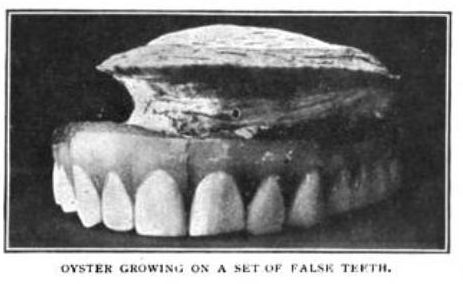
image source: The Strand magazine - 1903
Oysters will grow on almost any surface, including false teeth, if that's what happens to be available. The tooth-growing oyster shown above was found in the Chesapeake Bay in 1898, and sent to the Smithsonian where they were put on display and became quite a popular attraction. But soon a paternity battle erupted around them. The story was told in the Saint Paul Globe (Nov 30, 1902):
And, oddest of all, there is an upper set of false teeth to which an enterprising oyster is firmly attached.
The history of this last oyster is decidedly interesting. About four years ago it was raked out of the waters of Chesapeake bay by a dredging boat, together with the false teeth to which it was firmly fixed, and teeth and oyster were acquired by a hotel keeper at Cowart, Va., whose wife forwarded them to the Smithsonian Institution at Washington. The matter obtaining some advertisement, a man named Webster, residing in Bedford, Iowa, claimed the teeth, saying that he had lost them from a steamer bound for Norfolk.
The Smithsonian officials were undecided at first as to whether they should surrender the teeth or not, the object being so great a curiosity that they were anxious to hold on to it. But not many days later a Philadelphia woman claimed them, asserting that they were hers, and actually a third party, visiting the institution, demanded them, declaring that he recognized them as having been lost by himself.
Probably, from first to last, a good many persons have lost their false teeth overboard in the Chesapeake, the waters of which are liable to be pretty rough at times. Any way, the government scientists did not care to decide the dispute, and concluded to retain the specimen.
Half a century later, in 1954, yet another guy insisted the teeth were his, but in this case the Smithsonian was able to definitively rule out his claim, pointing out that the guy hadn't even been born yet when the teeth were found.
I'm guessing the Smithsonian probably still has this tooth-growing oyster hidden away somewhere in its archives.

Daytona Beach Morning Journal - Jan 28, 1954
Posted By: Alex - Mon Nov 26, 2012 -
Comments (3)
Category: Freaks, Oddities, Quirks of Nature, Museums, Oceans and Maritime Pursuits, Natural Wonders
Gus Mager and Un-Natural History
Cartoonist Gus Mager is well-respected for his pioneering newspaper strips. But he seems to have let his fertile and fanciful brain trespass into his supposedly scientific feature for Popular Science. Some of the "facts" given in his column appear somewhat dubious, to say the least. The business about the grapefruit was all settled well before Gus was working in the 1930s.
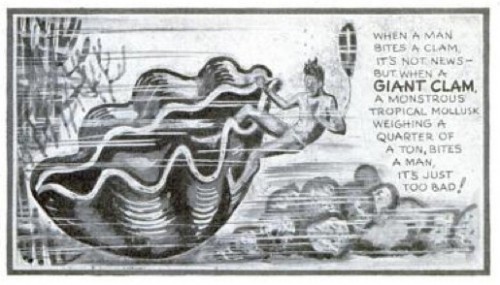

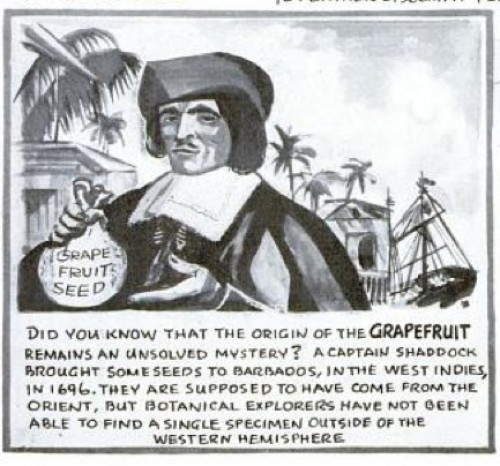
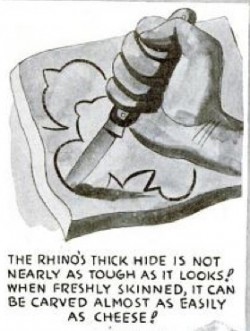
Posted By: Paul - Sat Oct 13, 2012 -
Comments (5)
Category: Animals, Comics, 1930s, Natural Wonders
Blind Man Spontaneously Regains Sight After 30 Years
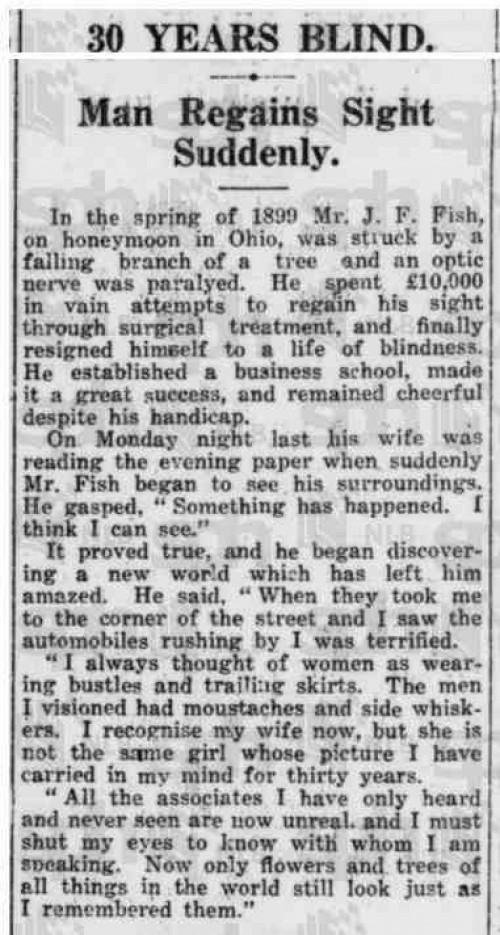
Here's a unique twist on the Rip-van-Winkle phenomenon.
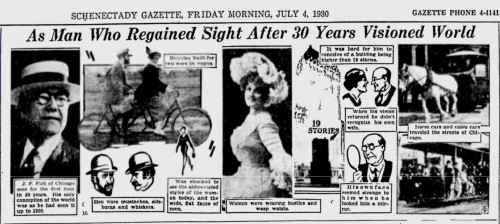
[Click to Enlarge]
Posted By: Paul - Wed Aug 01, 2012 -
Comments (9)
Category: 1930s, Time-travel, Natural Wonders, Eyes and Vision
The Sound of the Northern Lights Clapping
People have long reported that they've heard strange clapping sounds coming from the Northern Lights. But scientists tended to ignore these reports. The people hearing the sounds were told they were imagining them, or that the sounds were coming from sources such as trees or falling ice. But now Finnish researchers at Aalto University have recorded the Aurora Borealis actually making these snapping/clapping sounds, and have confirmed (to their satisfaction) that the sounds couldn't have been coming from anywhere else. More info at space.com and at the researcher's website.
Posted By: Alex - Sat Jul 28, 2012 -
Comments (8)
Category: Nature, Natural Wonders, Noises and Other Public Disturbances of the Peace, Science
Mike Grost, Supergenius

This child is Mike Grost, as he appeared in a 1965 article in Life magazine. At the time, he was said to have an IQ of 200+.
Whatever happened to Mike? A 2005 interview from the MSU State News had this to say:
Michael Grost was only 10 when he began at MSU in 1964.
Grost declined comment for this story, but in a 2002 interview with The State News, the Southfield
resident described his life in college as similar to having "40,000 brothers and sisters."
Grost held his first job on campus working with computers his freshman year, which propelled him into
software design after his 13-year college career - five of which were spent at MSU. He also attended
Yale University and U-M, earning a doctorate degree in mathematics at age 23. Grost currently is a
system architect at a computer company in Detroit.
"I really owe (MSU) a lot for the huge chance they took on me as a kid," Grost said in the 2002
interview.
Gee, I don't know. Kinda underwhelming. Shouldn't he be a Silicon Valley zillionaire by now?
Even his home page is kinda lackluster.
Oh, well--maybe as a certified genius he knows that material success is a sham.
Posted By: Paul - Sun Jul 15, 2012 -
Comments (11)
Category: Children, 1960s, Natural Wonders, Brain, Child Prodigies
Little Armadillos
Posted By: Paul - Sun May 06, 2012 -
Comments (3)
Category: Hygiene, Science, Cartoons, Natural Wonders
Glacier Crack Fly-thru
Expat47 says: "This is a virtual 'fly through' of a trench in Antarctica. The weird thing is that it resembles the trench on the death star from Star Wars. I tried to get the video embedded and posted but couldn't make it so I'll leave it up to y'all."
Done!
Posted By: Paul - Fri Mar 02, 2012 -
Comments (3)
Category: Reader Recommendation, Natural Wonders
Big Tree Inn
Read the bare facts about this charming place here.I sure wish it was still around.
(Click image for more detail.)
Posted By: Paul - Tue Mar 08, 2011 -
Comments (2)
Category: Restaurants, 1910s, Natural Wonders

| Who We Are |
|---|
| Alex Boese Alex is the creator and curator of the Museum of Hoaxes. He's also the author of various weird, non-fiction, science-themed books such as Elephants on Acid and Psychedelic Apes. Paul Di Filippo Paul has been paid to put weird ideas into fictional form for over thirty years, in his career as a noted science fiction writer. He has recently begun blogging on many curious topics with three fellow writers at The Inferior 4+1. Contact Us |





